
Lake MacLeod is a large saline inland lake located on the eastern boundary of Gnaraloo.
Supporting a significant inland wetland area of about 120km long and 10 – 40km wide, covering about 220,000 ha, Lake MacLeod holds one of the largest inland communities of mangrove and associated fauna in the world.
Lake MacLeod has a unique karst system, made of coastal limestone, which passes water from the Indian Ocean, 18 km underground using a hydrostatic pressure system, to bring salty water through sinkholes and vents into the lake basin. The lake surface is below sea level and water in the sinkholes and vents may be several metres deep. The sinkholes are connected by channels to a system of permanent mudflats, lagoons, and marshes, which can be up to a metre deep. As water travels through sinkholes, it evaporates creating a hypersaline environment when it reaches the terminal lagoon. Because of the variable environmental conditions, pond areas can vary substantially. The Northern Ponds area of Lake MacLeod include intermittently inundated flats, with water matching the ocean’s salinity coming through seepage vents. Freshwater enters though inflow from the Lyndon and Minilya Rivers. This mixture of the two sources classifies Lake MacLeod as a brackish water community (Kavazos & Horwitz, 2016).
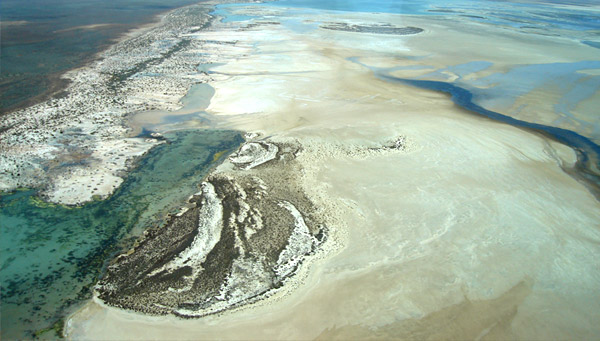
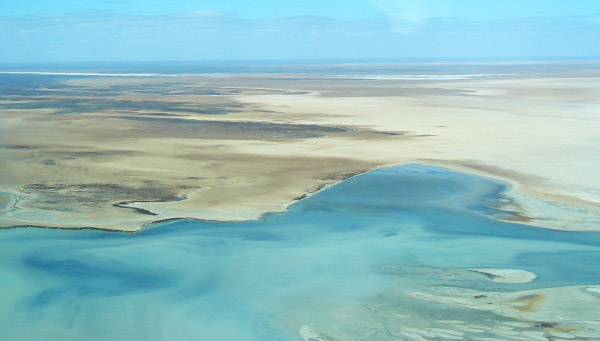
Mangrove communities
A large part of the biodiversity found at Lake MacLeod can be linked to the extensive mangrove communities found there. Lake MacLeod supports one of the world’s largest inland mangrove habitat and is considered to be of high national and international significance. Mangroves usually inhabit intertidal zones of shores in the tropics or subtropics, and disperse already germinated seeds (called propagules) using seawater. For this reason, it is fairly rare for mangrove species to occur inland, in isolation from the ocean. Lake MacLeod is composed of calcareous marine deposits and was separated from the Indian Ocean by the development of sand dunes during the mid-Holocene sea-level fall. Mangroves found in this area are thought to have used the karst system and a series of underground caves to distribute propagules to create the inland population (Ellison & Simmonds, 2003).
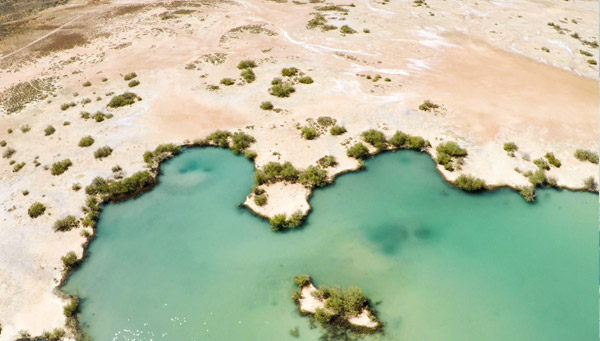

Importance of Lake MacLeod
The mangroves around Lake MacLeod are especially important because they provide shelter, habitat, and breeding space for many animals including insects, crabs, molluscs, nematodes, annelids, arachnids, various native fish species and migratory birds. Many of shorebirds use the ponds as a stop‑over site during their journey from north‑western to south‑western and south‑eastern Australia. Large aggregations of these migratory shorebirds have been counted within the Ponds, mainly on the shallows and mudflats associated with the permanent lagoons. The total number of water birds counted at the Northern Ponds has exceeded 50,000 every year for surveys since 2000. The surveys have also recorded 70 water bird species: 28 of these being listed under Australia’s bilateral treaties on migratory species with Japan and China. Uncommon species recorded at the Lake include the globally threatened Asian Dowitcher (Limnodromus semipalmatus). Lake MacLeod supports more than 1 % of the flyway populations of six shorebird species including the following: Curlew Sandpiper (Calidris ferruginea), Banded Stilt (Cladorhynchus leucocephalus), Red Knot (Calidris canutus), Red-capped Plover (Charadruius ruficapillus), Red-necked Stint (Caldris ruficollis) and Red-necked Avocet (Recurvirostra novaehollandieae).

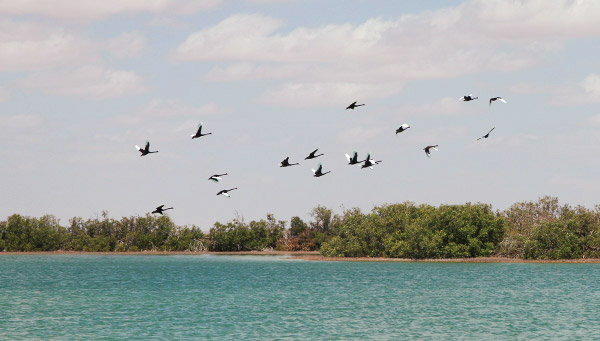
Proposed Ramsar listing
In 2005, given its unique ecological character and importance as habitat and stop-over resting points for numerous migratory bird species recognized under international treaties, Rio Tinto Minerals, WWF-Australia and the Department of Environment and Conservation (Western Australia) proposed its listing as a ‘Wetland of International Importance’ under the international Ramsar Convention 1971. That process has stalled and the lake has not yet been listed despite its significant merit and importance.
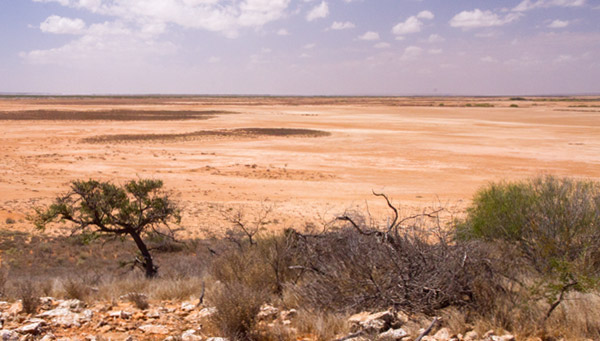
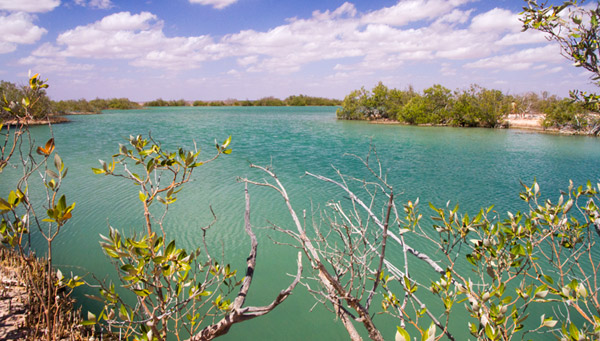
Access to the lake
Due to its environmental sensitivity and the mining operations of Rio Tinto on the lake, access to the lake system is closed to the public.
Value of mangrove and wetland areas
Inland mangrove areas, like Lake MacLeod, and coastal, intertidal mangrove communities are imperative to the biodiversity of Australia as a whole. Wetland systems, including these mangrove communities, also provide resources invaluable to human life. Water purification, carbon sequestration, maintenance of fisheries, coastal protection, erosion control, raw materials and food, tourism, and recreation are just a few of the services they supply.
Reports by Edith Cowan University
• Biodiversity and ecosystem functioning of the Northern Ponds, Lake MacLeod, Western Westralia
• Shorebird foraging ecology in northwestern Australian saltworks
References
Ellison, J. C. & Simmonds, S. (2003). Structure and productivity of inland mangrove stands at Lake MacLeod, Western Australia. Journal of the Royal Society of Western Australia, 86, 25-30.
Kavazos, C. R. J. & Horwitz, P. (2016). Biodiversity and Ecosystem Functioning of the Northern Ponds, Lake MacLeod, Western Australia. Centre for Ecosystem Management, 03.
Rogers, K. Boon, P. I. Branigan, S. Duke, N. C. Field, C. D. Fitzsimons, J. A. Kirkman, H. Mackenzie, J. R. & Sintilan, N. (2016). The state of legislation and policy protecting Australia’s mangrove and salt marsh and their ecosystem services. Elsevier Marine Policy, 72, 139-155.
The information was compiled by Karen Hattingh, Simone Bosshard, Tessa Concannon, Tess DeSerisy, Heather Shipp and Megan Soulsby, 2017/18
Continue reading
World heritage reef
Gnaraloo is home to stunning fish, corals, turtles, sharks and whales. The coastal and marine areas are magnificent but fragile natural assets.
Keep Gnaraloo Wild
We deeply believe that Gnaraloo should stay as it is, wild and undeveloped, to protect its biodiversity and wilderness experience.
